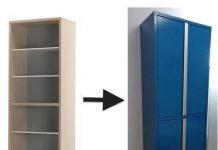![Types of sanders for wood [GUÍA PRÁCTICA]](https://uluvi.com/wp-content/uploads/2022/07/Types-of-sanders-for-wood-GUIA-PRACTICA-696x464.jpg)
The wood sander is one of the essential tools when doing DIY projects. However, choosing the one that suits us best is not an easy task since there is a wide variety of models with specific characteristics and use. With this practical guide on types of sanders for wood you will learn which one you should have in your DIY workshop.
In most carpentry or painting jobs it is essential to have a good electric sander. To help you choose the sander you need, here you can see a detailed comparison of professional models, the most common being:
- Belt sander. It stands out for its power, although it is less precise. Normally, it is used to sand raw wood and large surfaces such as beams, boards or parquet. For this reason, it is a type of sander that is not usually missing in carpentry workshops. It incorporates two parallel rollers on which the band of abrasive paper or sandpaper is fixed.
- orbital sander. Its use is very common among professionals and DIY enthusiasts. It is ideal for working on any type of surface, but especially smooth wooden boards, doors, strips, furniture, etc. It has a rectangular oscillating plate or skid on which the abrasive paper is fixed. The vibration movement of the plate produces the sanding and its main advantage is that it is not repetitive. In this way, it is avoided that marks are produced on the surface that we are working on.
- Orbital or eccentric sander. Its round base contains a velcro to which the sandpaper is attached and combines a rotary movement with the oscillating of the orbitals, but at high revolutions and greater power. The sanding obtained is finer and scratches on the wood are avoided. On the other hand, it is quite versatile since it allows you to work on smooth surfaces, curves and edges.
- Delta sander or mouse. Its base is triangular and has a velcro to adhere the sandpaper and access corners, corners, edges or holes. Normally, it is usually small, light and very manageable, which is why it is ideal as an auxiliary tool for any DIY enthusiast.
- Multi-function sander or multi-sander. They are easy to use, manageable and versatile, their triangular shape and compact design allow them to easily access corners and corners and adapt to a multitude of surfaces. In addition, they usually have an affordable price and are aimed at domestic work, since they usually do not have much power.
- polishing sander. It can be fitted with a sanding disk for a polishing machine or a sponge cap and wool cap depending on the work to be done (sanding or polishing). The disc performs a rotary movement, the speed of which can be adjusted according to the type of finish you want to obtain.

How to choose a sander
Choosing the most suitable wood sander will always depend on the type of work or project to be carried out. Mainly you should look at aspects such as:
- Power. There are models of less than 100w and more than 1200w, although it must be taken into account that the finer the work to be done, the less heavy and less powerful the sander will be.
- Spinning speed or revolutions per minute (RPM). Higher speeds give a better finish, but lower speeds allow for more pressure and deeper sanding.
- Dimensions and weight for greater manageability.
- Tank to collect dust from sanding or connection for vacuum cleaner.
- Corded or battery operated. Battery-powered sanders are more comfortable to handle, although they are not suitable for long-term work as the batteries run out quickly.

What sandpaper to use for wood
To know how to choose sandpaper for wood We must know the types of sandpaper that exist according to the abrasive used and its granulometry or number of sandpaper.
The main types of abrasives that we will find on the market are silicon carbide, aluminum oxide (corundum) and flint. Specifically, water-based sandpapers are made with silicon carbide particles and are the ones that can be applied with water or some liquid lubricant to obtain very fine finishes on wood and paint.
On the other hand, for coarser results, coarse grit sandpaper with a high abrasion capacity (between 40 and 80) is used, capable of sanding a lot in a few passes. To smooth surfaces and eliminate imperfections, medium grain sandpaper (between 80 and 120) will be used. Finally, to obtain a fine finish, a fine-grained sandpaper with little abrasive power (from 240) should be used.
The following infographic summarizes what type of sandpaper to use in each case:

How to sand correctly
Although sanders are very easy to use, they have their own peculiarities and require some basic notions to sand correctly:
- The sander should be passed over the entire surface but without pressing so as not to damage it or leave marks.
- Neither should it be left static on an area, since the only thing that will be achieved will be to lower it and then it will be difficult to equalize.
- You should start with a coarse-grained sandpaper and decrease the grammage with each pass, ending with a fine-grained sandpaper to obtain an excellent finish.
- The finish will be much finer if you follow the direction of the wood grain.
- When using a sander, it is essential to wear a mask and goggles to protect yourself from dust, as well as hold the piece with clamps or clamps.
- Always wait for the skid or base of the machine to come to a complete stop before removing your hands from it.

I hope this practical guide on types of sanders for wood It has helped you to be clearer about what type of electric sander you need for your work and DIY projects. You will find more guides on DIY and decoration at Thank you very much for commenting and sharing!



